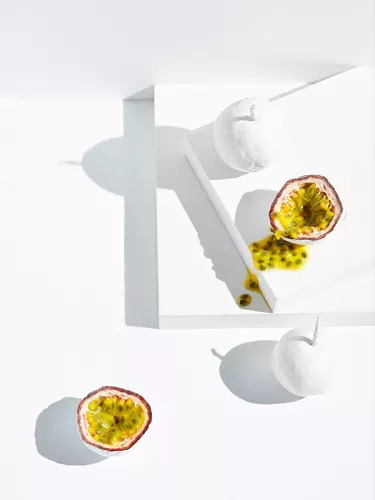Can mutant food save our planet?
Glowing popcorn, Instaworthy tinned tuna and other ideas to make your everyday eating more enjoyable
Genetically modified foods have the potential to solve huge world problems like combating poverty and food insecurity, strengthening farm crops to tolerate drought, feeding a fast-growing population, and improving nutrition. But what about mundane problems? The everyday little things that irritate us? Once the world’s problems have been solved by genetically modified food maybe the science could be applied to the trivial food nightmares we come up against in our homes, office kitchens and cafeterias.
We’ve investigated some innovative genetically modified food and explored how genetic modifications could be applied in a … different way.
Glow-in-the-dark beer
A former NASA biologist has pioneered the drink of choice for New Years Eve parties around the world: glow-in-the-dark beer. Josiah Zayner used a gene from a jellyfish and added it to the yeast to turn it a fluorescent green colour. He’s selling DIY fluorescent yeast kits so people can make their own glowing beer at home.
Suggestion: Glow-in-the-dark corn
Imagine if the same jellyfish gene was implanted into corn – specifically corn destined to become popcorn. It’d be a boon for irritable cinema-goers who hate the sound of people eating popcorn mid-film. Within the dark environment of the cinema, people would be shamed into finishing their popcorn before the trailers end and lights completely dim. Otherwise everyone in the cinema would be able to pinpoint exactly who to blame for all the rustling and crunching – the person shovelling fluorescent green handfuls of popped kernels into their mouths fifty times per minute.

Pink pineapples
This is not a drill. Pineapples with pale pink – not yellow – flesh on the inside have been developed by Del Monte (the American food company behind fruit drink Fruit Burst). There has never been a more Instagrammable fruit. The pineapples are genetically engineered to produce lower levels of the enzymes that convert the pink pigment lycopene (also found in tomato and watermelon) to the yellow pigment known as beta-carotene.
Suggestion: Pink tinned tuna
Psychologists say pink reduces anger, which explains why cells in Switzerland prisons and police stations have been painted “cool down pink”. Office workers would attest that nothing raises anger levels than the room-vacating scent of Jeff’s bloody tuna salad wafting over for the third time this week, raising your stress-levels in an already stress-inducing place. If the tuna was pink perhaps it’d reverse (or at least dial-down) the anger directed at Jeff and his offensive choice of salad protein.
Rice to combat vitamin deficiency
Genetically-modified golden rice could improve lives of those in developing nations, specifically those combating severe vitamin A deficiency. It’s boosted with beta-carotene, which the body then turns into vitamin A. Deficiency in this vitamin causes blindness in a quarter to half a million children each year, the majority of which live in Asia and Africa.
Suggestion: Potatoes that actually have nutritional value
While boosting easy-to-grow vegetables with vital nutrients obviously has its benefits, let’s focus our attention on the potato. Some medical professionals say potato shouldn’t count in your daily vegetable intake because they contain high-GI carbs and minimal nutritional value. This is a travesty: roast potatoes are one of the simplest joys in life. Imagine if roast potatoes, mashed potato and even hot chips contained some kind of hard-to-find vitamin or mineral. Imagine if we had to eat potatoes every day. If you say so, doctor! *Inhales crispy potatoes cooked in duck fat*

Venomous cabbage
A cabbage genetically modified to include the “poison gene” from scorpion tails is currently in development. While it sounds more than mildly terrifying, the scientists in Beijing who developed this say the poison the cabbage produces isn’t harmful to humans yet will kill caterpillars when they nibble the leaves, therefore requiring fewer pesticides.
Suggestion: Slightly venomous figs
Figs are delicious and expensive. If you’ve grown them in your backyard, you know how devastating it is when birds ravish each fig the millisecond it ripens. You’ve tried nets. You’ve tried wrapping each fig in tin foil while still on the branch. You’ve tried sunrise to sunset surveillance...It’s no use. Look, the suggested venomous figs shouldn’t kill birds but what if it just had a tiny bit of venom. Enough to make the bird with expensive taste think twice before chomping down on the star of your cheese platter.
Emily Naismith has been called the Hunter S. Thompson of weird food science. She co-hosts Ingredipedia, a food podcast for food nerds and used to write food reviews in emojis before there was an emoji for everything. Follow her on Twitter.
